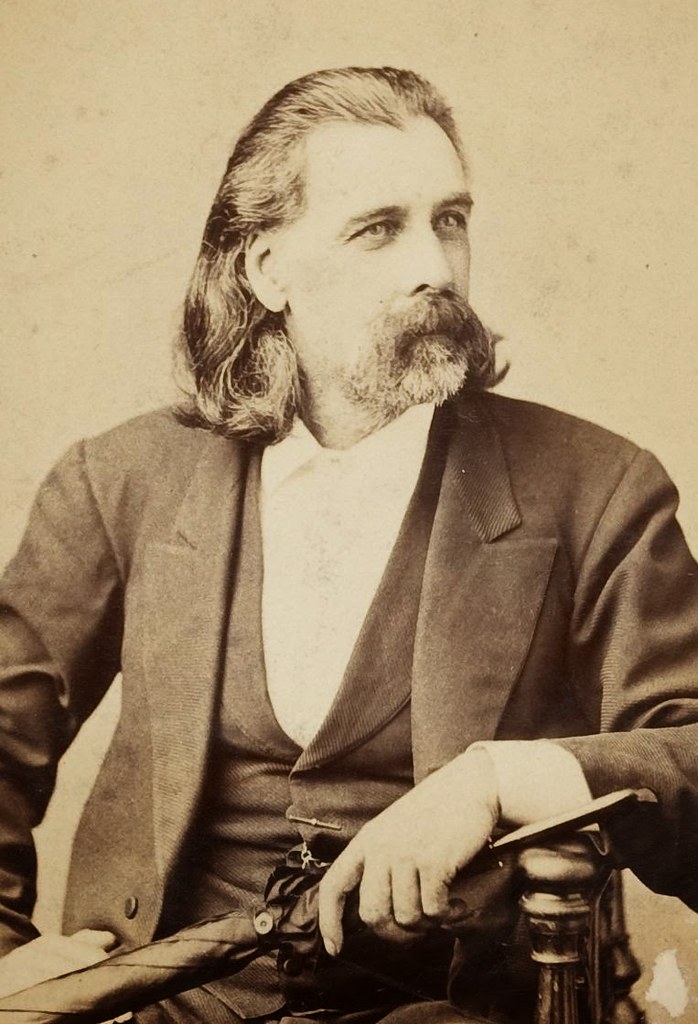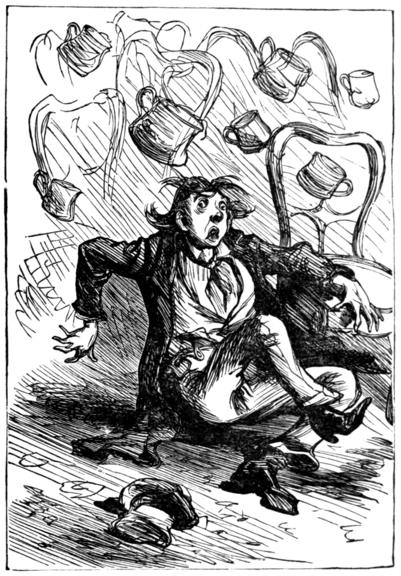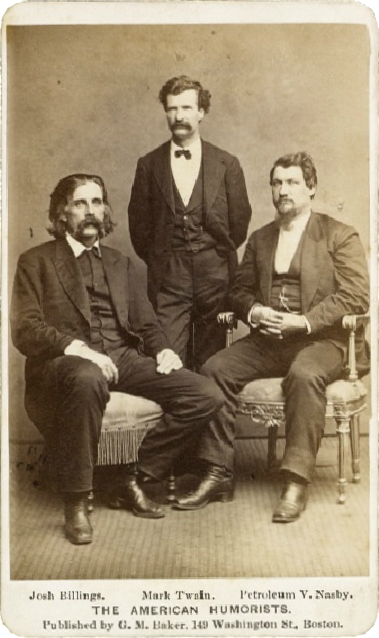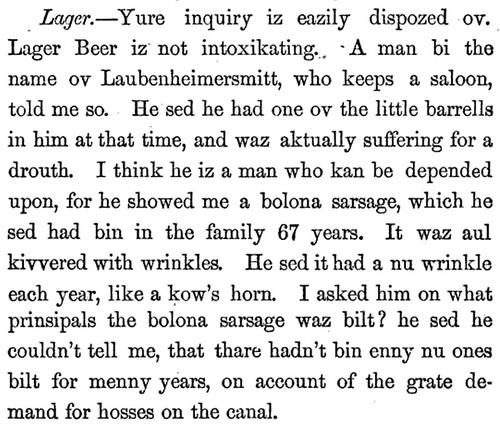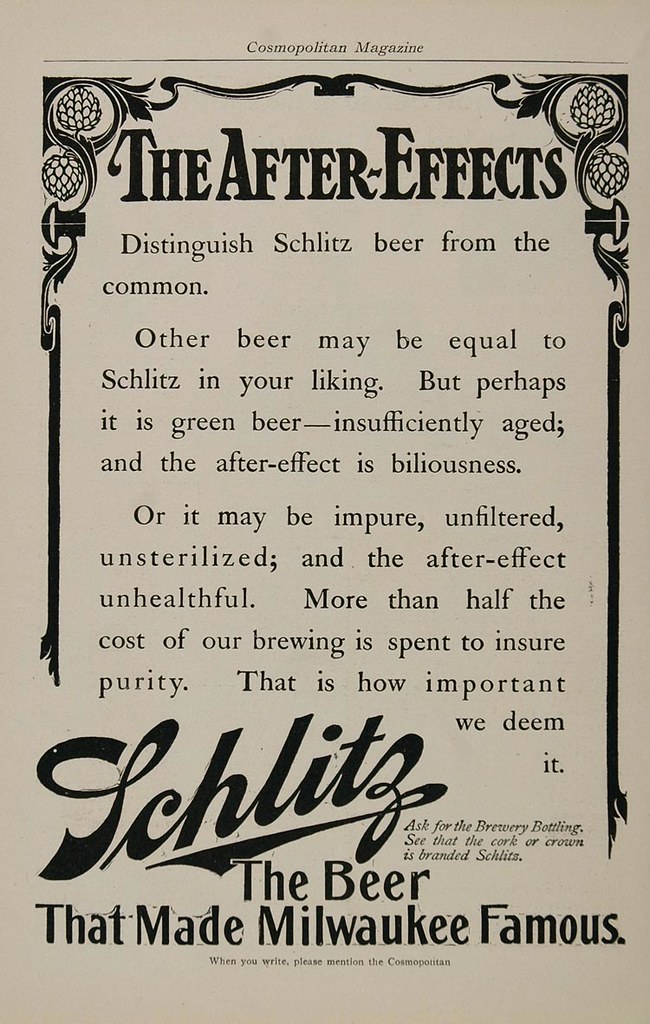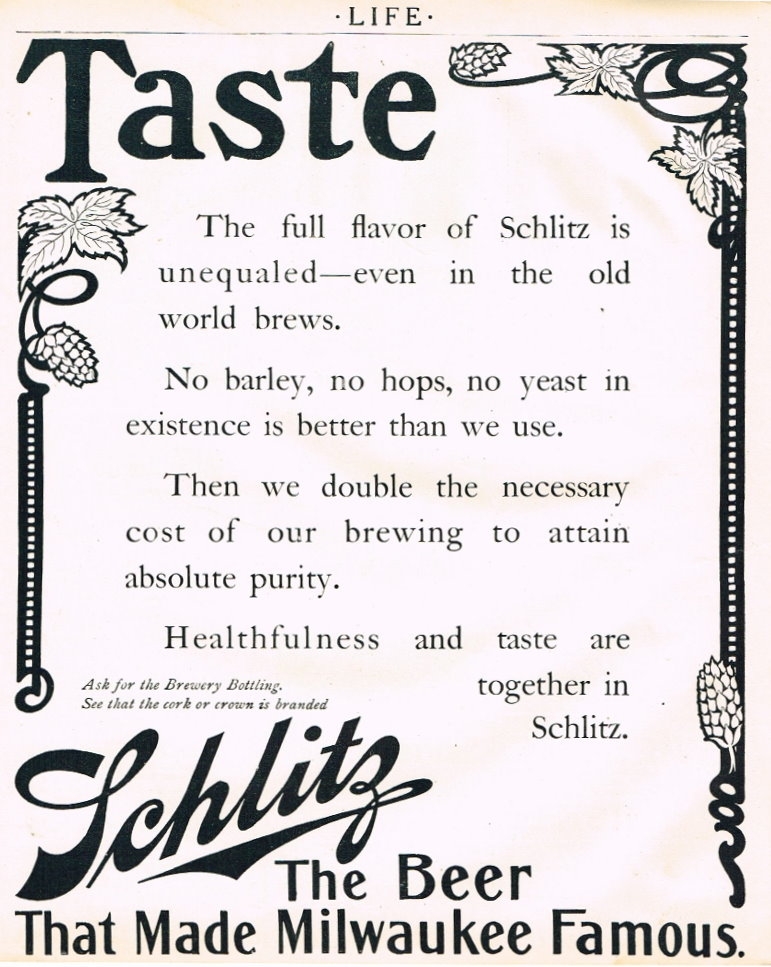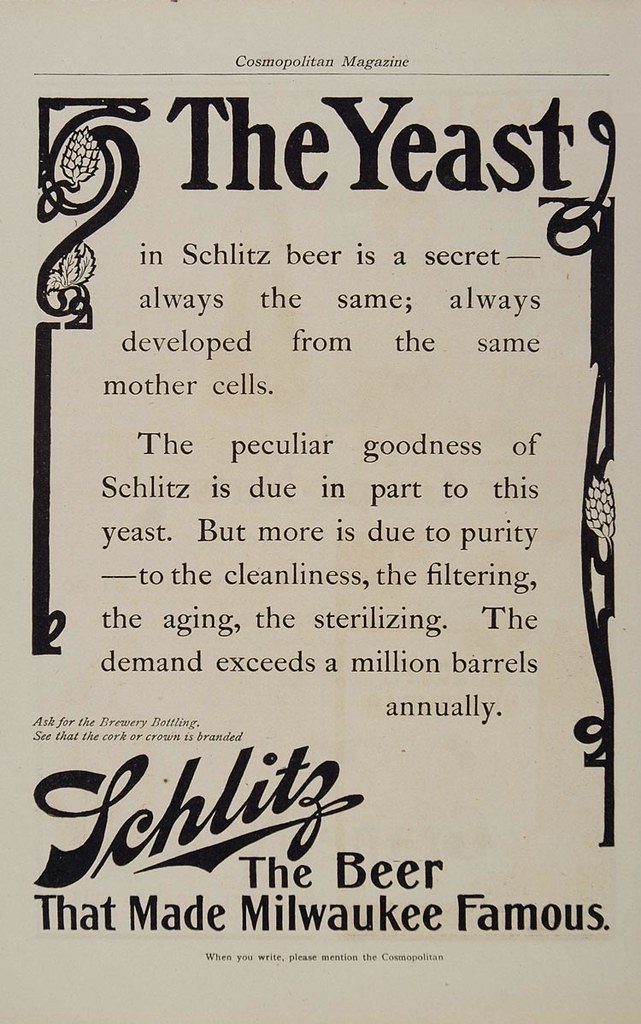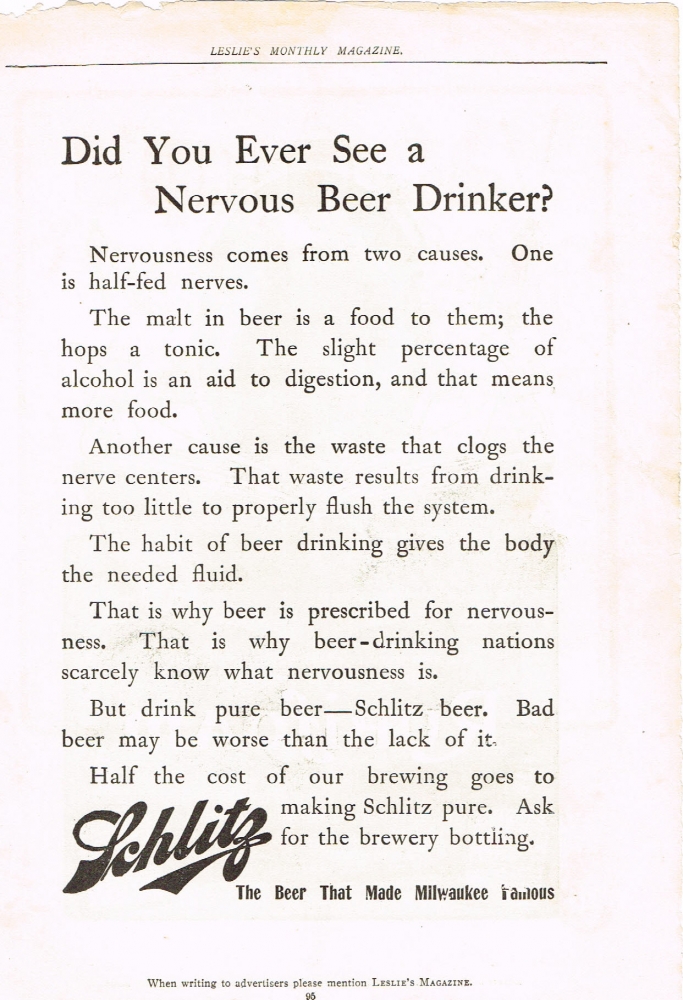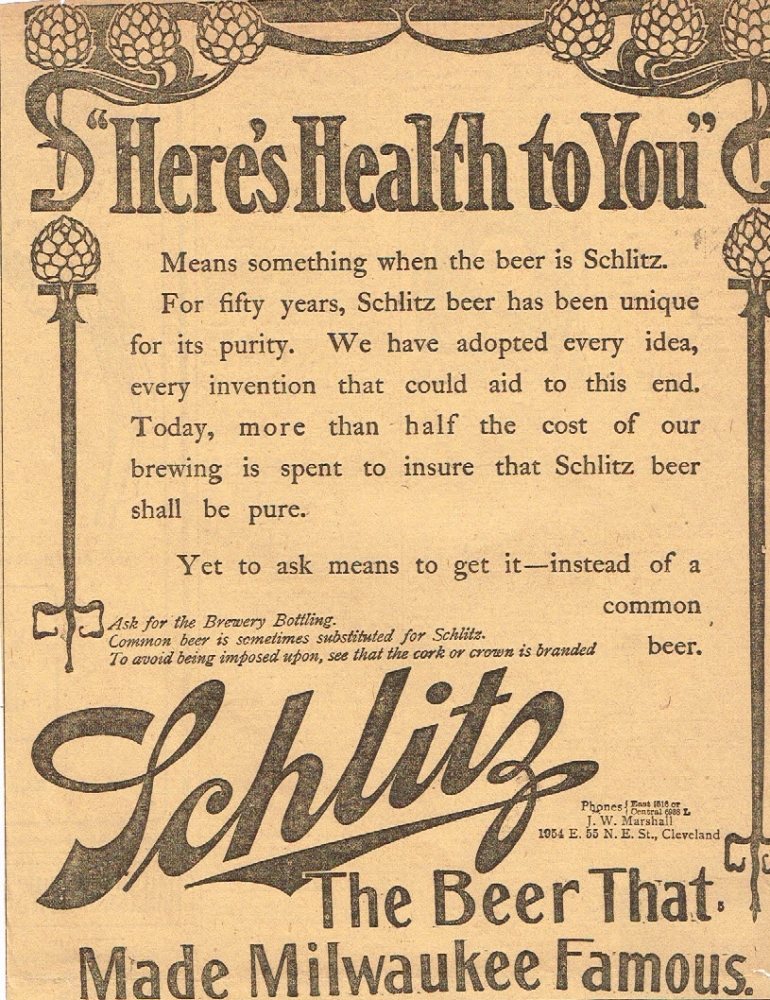
Friday’s ad is for Schlitz, from 1905. In the first decade of the 20th century, Schlitz Brewing, then one of the largest breweries in the U.S. after the industry had shrunk from over 4,000 to around 1,500 in just 25 or so years, did a series of primarily text ads, with various themes. In this ad, which seems like the least effective of this series, they’re simply saying because they’ve been around fifty years and spend a lot every year on their beer being pure that the “result is world-wide demand.” Hmm.



